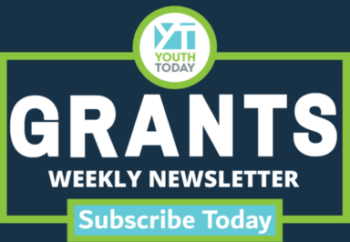The Robert Bowne Foundation’s (RBF) commitment to building a vibrant OST field included funding advocacy at the national, state, city, and community levels. Advocates worked to promote stable program funding as well as public policies that promoted and maintained a vibrant “third space” — in addition to home and school — for children to grow and flourish.
The RBF funded advocacy organizations to:
- develop strategies
- build coalitions
- community organize
- engage youth and their families as community activists.
RBF sponsored OST program staff to participate in the Afterschool Ambassador program of the national Afterschool Alliance. Afterschool Ambassadors received training, technical assistance, and material support to bring back their work to their local communities.
RBF Executive Director Lena Townsend and Program Officer, Anne Lawrence, regularly brought together the Foundation’s advocacy grantees to share strategies, discuss the larger policy picture beyond day-to-day struggles, identify next steps, and propose concrete collaborative actions.
Some results of these efforts include:
- Eleven New York City Afterschool Ambassadors, representing a range of community-based organizations, with the knowledge, skills, and experience to interact with policymakers, organize events, and mobilize community members to support youth education;
- Coalitions such as the: Neighborhood Family Services Coalition, New York State Afterschool Network (NYSAN), Collaborative for Building After School Systems (CBASS), and the Afterschool Alliance;
- Communities actively involved in the Lights On Afterschool national rally organized by the Afterschool Alliance;
- Policy documents — such as a Concept Paper for New York City’s Department of Youth and Child Development (DYCD) — influencing Request for Proposals (RFPs) for city funding; vision statements for elected officials and candidates; and the United Neighborhood Houses’ Blueprints for Neighborhoods;
- Media support for Campaign for Children, a successful effort to promote funding for Pre-K and afterschool programs in New York City; and
- Advocacy training attended by hundreds of participants throughout New York City and New York State.
Esther Grant-Walker, Director of School-Age Programs at Stanley Isaacs Neighborhood Center and an Afterschool Ambassador, describes the impact of her advocacy efforts on her agency:
“The first thing that shifted was to make the ‘Lights On Afterschool’ message meaningful to and come from the children. They had to learn about advocacy …
“At this point it wasn’t surprising to see our entire program marching to our state assemblyman’s office, singing a song and doing a dance … The kids knew why they were there and, unscripted, can talk about it …
“Two weeks ago, [our local Assemblyman] visited our Senior Center. That was the assemblyman our program marched the kids over to his office. He wasn’t there at the time, but the assistant took a video of the conversation on her phone. He called after he saw it to say it was important that we were teaching the kids. When he visited the Senior Center, he brought it up and remembered the hundred kids who went to his office to fight for what they deserve.”


















